World Geography And Politics Daily News | 23 May 2023

Views (193)
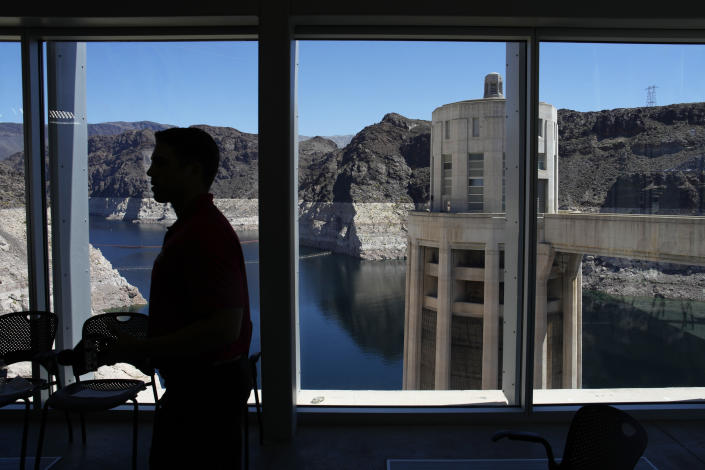
Sudan conflict: Air strikes and clashes as new ceasefire begins
A fresh seven-day truce is officially under way - though more hostilities have been reported in Khartoum and other cities.
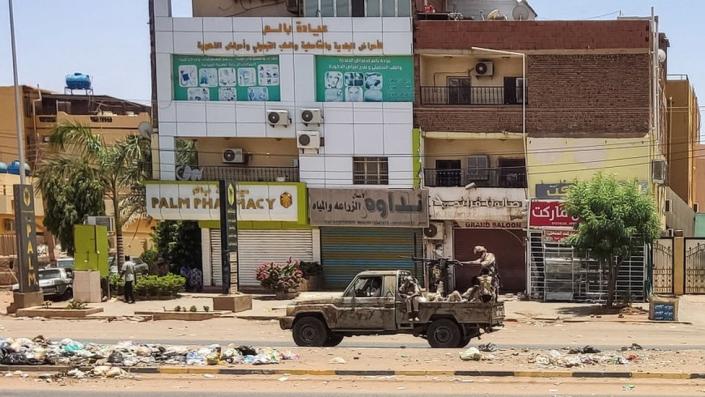
More air strikes and clashes have been reported in Sudan - dampening hopes for the latest attempt at a ceasefire in the conflict-hit country.
A new seven-day truce officially began at 21:45 local time (19:45 GMT).
But witnesses have already spoken of further hostilities in the capital Khartoum and elsewhere.
The violence began five weeks ago, and was triggered by a power struggle between the leaders of the regular army and a paramilitary faction.
Multiple previous attempts to achieve a lasting pause in hostilities in the north-east African country have been shaky or collapsed.
There was renewed optimism for this new ceasefire, which came about following formal talks that were brokered by Saudi Arabia and the United States.
The new deal would be enforced by a "ceasefire monitoring mechanism," according to a US-Saudi statement issued on Saturday - which acknowledged the previous failures to secure peace.
But the paramilitary Rapid Support Forces (RSF) issued a belligerent message just hours before the agreement was due to become effective.
Gen Mohamed Hamdan Dagalo - better known as Hemedti - was recorded in an audio message saying his troops would not retreat "until we end this coup".
Witnesses told the AFP news agency of combat in north Khartoum minutes after the latest ceasefire officially began - as well as air strikes in the east of the city.
Meanwhile, civilians told Reuters they that had heard firing in Omdurman and Bahri, Khartoum's twin cities. But they did not report major violations of the truce.
Conflict broke out in Khartoum on 15 April following days of tension as members of the RSF were redeployed around the country in a move that the army saw as a threat.
The key dispute is between Gen Dagalo and the head of the military, Gen Abdel Fattah al-Burhan - who has been Sudan's de-facto leader since President Omar al-Bashir was toppled in 2019.
Hundreds of people have been killed in the fighting, and the UN has warned of a worsening situation in a country where a huge number of people already relied on aid before the conflict.
Meanwhile, more than a million people have fled their homes since the conflict began.
More women sue Texas, asking court to put emergency block on state's abortion law
An OB-GYN found herself secretly traveling out of state to abort her wanted pregnancy, marred by the diagnosis of a fatal fetal anomaly. All of the women were told they could not end their pregnancies in Texas, a state that has enacted some of the nation's most restrictive abortion laws. Now, they're asking a Texas court to put an emergency hold on some abortion restrictions, joining a lawsuit launched earlier this year by five other women who were denied abortions in the state, despite pregnancies they say endangered their health or lives.
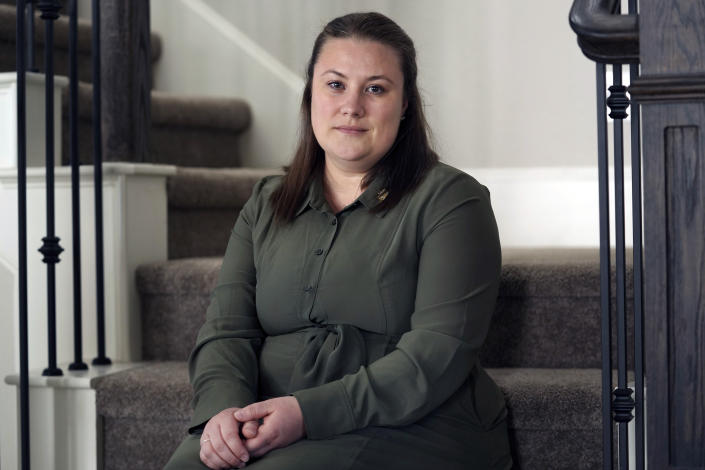
WASHINGTON (AP) — One woman had to carry her baby, missing much of her skull, for months knowing she'd bury her daughter soon after she was born. Another started mirroring the life-threatening symptoms that her baby was displaying while in the womb. An OB-GYN found herself secretly traveling out of state to abort her wanted pregnancy, marred by the diagnosis of a fatal fetal anomaly.
All of the women were told they could not end their pregnancies in Texas, a state that has enacted some of the nation's most restrictive abortion laws.
More than a dozen Texas women in total have joined the Center for Reproductive Rights' lawsuit against the state's law, which prohibits abortions unless a mother's life is at risk — an exception that is not clearly defined. Texas doctors who perform abortions risk life in prison and fines of up to $100,000, leaving many women with providers who are unwilling to even discuss terminating a pregnancy.
“Our hope is that it will allow physicians at least a little more comfort when it comes to patients in obstetrical emergencies who really need an abortion where it's going to effect their health, fertility or life going forward,” Molly Duane, the lead attorney on the case, told The Associated Press. “Almost all of the plaintiffs in the lawsuit tell similar stories about their doctors saying, if not for this law, I'd give you an abortion right now.”
The Texas attorney general's office, which is defending the state in the lawsuit, did not immediately return an email seeking comment Monday.
Duane said the Center for Reproductive Rights is looking at filing similar lawsuits in other states, noting that they've heard from women across the country. Roughly 25 Texas women have contacted the organization about their own experiences since the initial lawsuit was filed in March.
The women who joined the lawsuit describe being elated about finding out they were pregnant before the experience turned catastrophic.
Jessica Bernardo and her husband spent years trying to conceive, even consulting fertility doctors, before finally become pregnant with a daughter, Emma, last July.
Almost immediately, Bernardo was coughing so hard and often she would sometimes throw up. Fourteen weeks into the pregnancy, test results revealed her baby likely had Down Syndrome, so she consulted a specialist who gave her devastating news: Emma's heart was underdeveloped and she had a rare, deadly disorder called fetal anasarca, which causes fluid to build up in the body.
“He handed me a tissue box,” recalled Bernardo, who lives in Frisco, Texas. “I thought maybe the worst thing he was going to tell us was that she's going to have Down Syndrome. Instead, he said, ‘I can tell you right away...she wouldn’t make it.'”
The doctor warned her to watch out for high blood pressure and coughing, symptoms of Mirror syndrome, another rare condition where a mother “mirrors” the same problems the fetus is experiencing.
With Bernardo's blood pressure numbers climbing, her OB-GYN conferred with the hospital's ethics board to see if she could end the pregnancy but was advised Bernardo wasn't sick enough. Bernardo spent $7,000 traveling to Seattle for an abortion a week later.
Even if Emma made it through the pregnancy, doctors would have immediately needed to drain excess fluids from her body, only for her to survive a few hours or days, Bernardo said.
“Reading about everything they would do sounded like complete torture to a newborn that would not survive," she said. “Had I not received an abortion, my life would have very likely been on the line.”
Other women facing similar situations have not had the financial resources to travel outside of the state.
Samantha Casiano, a 29-year-old living in eastern Texas, found out halfway through her pregnancy last year that her daughter, Halo, had a rare diagnosis of anencephaly, where much of the skull and brain is missing. Her doctor told her she would have to continue with the pregnancy because of Texas law, even though her baby would not survive.
With five children, including a goddaughter, at home she quickly realized she could not afford an out-of-state trip for an abortion. The next next few months of her pregnancy were spent trying to raise money for her daughter's impending funeral, soliciting donations through online websites and launching fundraisers to sell Mexican soup. Halo was born in April, living for only four hours.
“I was so full of heartbreak and sadness, all at the same time,” Casiano said.
Women in the lawsuit say they could not openly discuss abortion or labor induction with their doctors, instead asking their doctors discreetly if they should travel outside of the state.
Dr. Austin Dennard, an OB-GYN in Dallas, never talked about her own abortion with her doctors after they discovered anencephaly on the baby's ultrasound during her third pregnancy last year. She worried her out-of-state trip to end the pregnancy could jeopardize her medical license or invite harassment against her and her husband, also an OB-GYN. Dennard was inspired to go public with her case when one of her own patients joined the original lawsuit filed in March after traveling to Colorado to abort a twin fetus diagnosed with a life-threatening genetic disorder.
“There was an enormous amount of fear that I experienced afterward,” Dennard said. “It’s an additional way of feeling silenced. You feel you have to do it in secret and not tell anyone about it.”
Dennard is expecting another child later this year.
___
Associated Press writer Paul Weber in Austin, Texas, contributed to this report.
TikTok files lawsuit to overturn Montana's 1st-in-nation ban on the video sharing app
Social media company TikTok Inc. filed a lawsuit Monday seeking to overturn Montana's first-in-the-nation ban on the video sharing app, arguing the law is an unconstitutional violation of free speech rights and is based on “unfounded speculation” that the Chinese government could access users' data. The lawsuit by TikTok, owned by Chinese tech company ByteDance, follows one filed last week by five content creators. TikTok says it has not shared and would not share U.S. user data with the Chinese government and has taken measures to protect the privacy and security of its users, including storing all U.S. user data in the United States, according to the lawsuit.

“The Chinese Communist Party is using TikTok as a tool to spy on Americans by collecting personal information, keystrokes, and even the locations of its users — and by extension, people without TikTok who affiliate with users may have information about themselves shared without even knowing it," Emily Flower, a spokesperson for the Montana Department of Justice, said in a statement.
"We expected legal challenges and are fully prepared to defend the law that helps protect Montanans’ privacy and security,” she wrote
The federal government and about half the U.S. states, including Montana, have banned TikTok from government-owned devices.
Montana’s new law prohibits downloads of TikTok in the state. It would fine any “entity” — an app store or TikTok — $10,000 per day for each time someone “is offered the ability” to access the social media platform or download the app. The penalties would not apply to users.
Lebanese prosecutor summons central bank chief following Interpol warrant over corruption charges
Lebanon's public prosecutor Monday summoned the country's embattled central bank governor for questioning following an international arrest warrant issued against him in France over corruption charges, judicial officials said. Riad Salameh is to answer the summons later this week, although no specific date was given. France, Germany and Luxembourg are investigating Salameh and his associates over myriad alleged financial crimes, including illicit enrichment and laundering of $330 million.

BEIRUT (AP) — Lebanon's public prosecutor Monday summoned the country's embattled central bank governor for questioning following an international arrest warrant issued against him in France over corruption charges, judicial officials said.
Riad Salameh is to answer the summons later this week, although no specific date was given.
France, Germany and Luxembourg are investigating Salameh and his associates over myriad alleged financial crimes, including illicit enrichment and laundering of $330 million. A French investigative judge on May 16 issued an international arrest warrant, or Interpol red notice, for the 72-year-old Salameh after he failed to show up in Paris for questioning.
Officials in Beirut said that Public Prosecutor Ghassan Oueidat will formally ask France to hand over the governor's case files to decide on future measures against Salameh.
Asked whether it is possible to hand the former governor over to France, the officials — who spoke on condition of anonymity — said Lebanon does not hand its citizens to foreign countries and the case will be overseen in Lebanon. They added that once Oueidat receives the case files from France, he will decide whether Salameh should face justice in Lebanon or elsewhere.
In 2020, the Lebanese prosecution received two Interpol red notices for tycoon Carlos Ghosn, who faced financial misconduct charges in Japan. Ghosn remains in Lebanon.
Salameh has repeatedly denied all corruption allegations, saying he made his wealth from his years working as an investment banker at Merrill Lynch, inherited properties, and investments. He said he would only resign if convicted of a crime. He also said last week he plans to appeal the Interpol red notice.
The officials said French authorities have set May 31, as the day to question Salameh’s brother, Raja, in France and the governor’s close associate Marianne Hoayek on June 13.
Reports have circulated that the Lebanese central bank had hired Forry Associates Ltd., a brokerage firm owned by Raja, to handle government bond sales from which the firm received $330 million in commissions.
Riad Salameh, a Lebanese-French citizen, has held his post for almost 30 years, but says he intends to step down after his current term ends in July.
The three European governments in March 2022 froze over $130 million in assets linked to the probe. During a visit to Lebanon in March, the European delegation questioned Salameh about the Lebanese central bank’s assets and investments outside the country, a Paris apartment — which the governor owns — and his brother’s brokerage firm.
Once hailed as the guardian of Lebanon’s financial stability, Salameh since has been heavily blamed for Lebanon’s financial meltdown. Many say he precipitated the economic crisis, which has plunged three-quarters of Lebanon’s population of 6 million into poverty.
The beautiful slice of the Suffolk coast that once held Britain’s nuclear secrets
Putin’s war in Ukraine has plunged our relations with Russia back into the deep freeze, with the scars of the last Cold War barely healed. At Orford Ness, an offcut of the Suffolk coast where Britain developed its nuclear deterrent, those scars take physical form in the wreckage and residue of military experimentation.
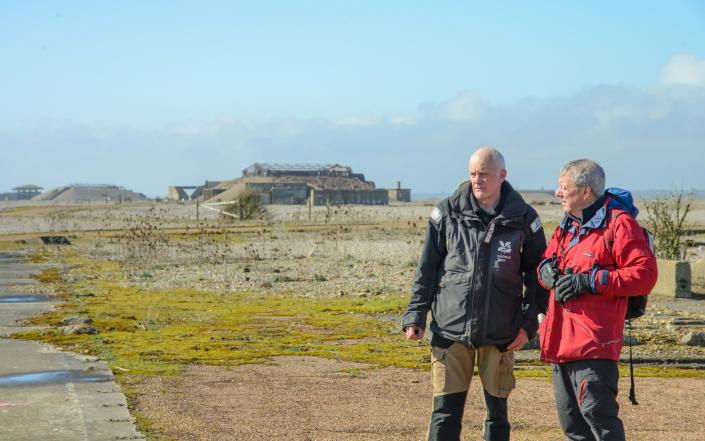
Putin’s war in Ukraine has plunged our relations with Russia back into the deep freeze, with the scars of the last Cold War barely healed. At Orford Ness, an offcut of the Suffolk coast where Britain developed its nuclear deterrent, those scars take physical form in the wreckage and residue of military experimentation.
The site is a spit of shingle and marshland littered with bizarre structures – prominent among them a wooden tower known as The Black Beacon which was used by the Atomic Weapons Research Establishment (AWRE) in the testing of nuclear bombs to counter the Soviet threat. Each year on the steps of The Black Beacon a pair of jackdaws start to build a nest and each year a man called Andrew Capell moves the twigs to a more sensible place until the jackdaws get the message. As a vignette of how the sinister can turn miraculous, it encapsulates the story of Orford Ness, which last month opened to the public for the 2023 season.
The Ness, as it’s known, is separated by the River Alde from the village of Orford, with its Norman castle, medieval church and timeless English air. Close enough to be aware of (from my Orford hotel window I can see the concrete blast chambers known as The Pagodas) yet seemingly far away, the Ness is like a peculiar relative kept locked in the attic.
For most of the 20th century the keyholder was the Ministry of Defence as this was a highly classified military research facility even before the AWRE moved in. The final hush-hush operation was an Anglo-American “over the horizon” radar system that barely worked and was decommissioned in 1973. It bequeathed the Ness its most dystopian codename – Cobra Mist – and structure: a vast metal box on stilts.
Since then the binoculars have been wielded by birdwatchers rather than security personnel. In 1993 the National Trust took charge, protecting the rare habitats of the 900-hectare site and controlling visitor numbers. It is a Site of Special Scientific Interest, a Ramsar site (a wetland of international importance) and a National Nature Reserve. Threatened species of birds, animals and bugs thrive in its protective remoteness. It also has some extraordinary structures that enjoy the same official protection as Stonehenge.
To reach it I take a little ferry from the village quay, puttering 100 metres across the River Alde to a place a million miles away. The skipper of the boat, and my guide for the day, is Andrew Capell, the National Trust’s Area Ranger for Orford Ness. Fellow passengers include Karen, the NT’s Lesser Black-backed Gull Ranger and Sweep the working border collie, who would be the NT’s Rare-breed Sheep Ranger (the Ness has a flock of them) if he had a job title.
Sheep were Andrew Capell’s gateway drug to this addictive place. Having worked as a shepherd in Leicestershire and mid-Wales he answered an ad to look after the flock on the Ness. That was 12 years ago and in the intervening time he has “morphed into the Area Ranger” with responsibility for the built as well as the natural environment. He is on the Ness about 300 days a year, he reckons. “I’m the one that, come December, the boss has a go at because I haven’t used up all my holiday – but I don’t feel like I need a week off to unwind,” he tells me.
That’s because just being here rinses the mind, raises other possibilities for the world. Murmurations of starlings and waders balloon over the lagoons. Marsh harriers hunt the boggy pastures and Chinese water deer jump the banks. On foot and by buggy Andrew guides me around, revealing the top-secret holes where creatures live and nest, and decoding the hardware that lies around like puzzles.
So much went on here that predates the nuclear experiments. An oval of rusty metal was “an early bouncing bomb”. Two concrete blocks enmeshed in brambles are “significant in world history” because they were the base of the receiving antenna for Robert Watson-Watt’s earliest experiment in radar, known as RDF (Radio Direction Finding).
Crossing the tidal creek that bisects the Ness on a Bailey bridge, we pass from marshland to vegetated shingle, the bleak liminal expanse that was used by the AWRE for nuclear weapons testing. On the edge of the shingle stands the Bomb Ballistics Building, a tower on which boffins stood plotting the trajectories of falling bombs with such storybook names as Red Beard and Yellow Sun.
Now it makes a vantage point where visitors can climb and gawp, allowing their eyes and imaginations to adjust as the vista opens up below. The shingle itself is corrugated with green ridges of highly specialised flora, the ridges being an aggregation of shorelines that have built up over thousands of years. As we reach the top of the tower the sun comes out, throwing the corrugations into relief and glinting off the choppy North Sea beyond.
A few hundred metres south stands the squat tower of The Black Beacon, to its right the bomb testing site with those temple-like Pagodas. The scene is arresting but apparently lifeless, like a film set. Then there is movement in the corner of my eye and I realise that the shingle is teeming with mad March hares, careening and colliding in skirmishes of fun.
The hares show little interest in us humans as we cross the shingle to The Black Beacon, used as a telemetry tower in the bomb testing. The jackdaws do not show themselves but their handiwork is plain to see, a mesh of twigs laid precisely where visitors tread as they enter the tower (like several other buildings it contains an exhibition). Andrew gently relocates the twigs and we continue to the cluster of AWRE structures where the Cold War concept of Mutually Assured Destruction was tested to, well, destruction.
In these reinforced concrete laboratories, bombs intended for Moscow or Leningrad were stress-tested in a variety of procedures known insouciantly as “shake, rattle and roll”. Propped on columns, the roofs of The Pagodas were designed to collapse and smother an explosion in the event of an accident. Now the roofs make brilliant breeding grounds for herring gulls and lesser black-backed gulls, which swirl and settle in great clamouring gusts. Nearby, The Armoury where the bombs were stored between tests is also being put to a new use.
This is where Andrew and Sweep herd their flock of Whitefaced Woodlands and Manx Loaghtans when the Ness threatens to flood. Andrew warns me that its brick chambers retain a peculiar smell that he refers to as “atomic”, so pervasive that it impregnates the sheeps’ fleeces and takes ages to go away. I sniff and momentarily pick up something unpleasantly metallic that I fancy could be the residual smell of Yellow Sun.
Then I decide I’ve imagined it. But there’s no mistaking the frisky hares I spot when I step back on to the shingle. While Vladimir Putin rains death on Ukraine, the former Armageddon factory of Orford Ness has been reinvented in favour of life.
Breakthrough proposal would aid drought-stricken Colorado River as 3 Western states offer cuts
Arizona, Nevada and California said Monday they’re willing to cut back on their use of the dwindling Colorado River in exchange for money from the federal government -- and to avoid forced cuts as drought threatens the key water supply for the U.S. West. The $1.2 billion plan, a potential breakthrough in a year-long stalemate, would conserve an additional 3 million acre-feet of water through 2026, when current guidelines for how the river is shared expire. The 1,450-mile (2,334-kilometer) river provides water to 40 million people in seven U.S. states, parts of Mexico and more than two dozen Native American tribes.
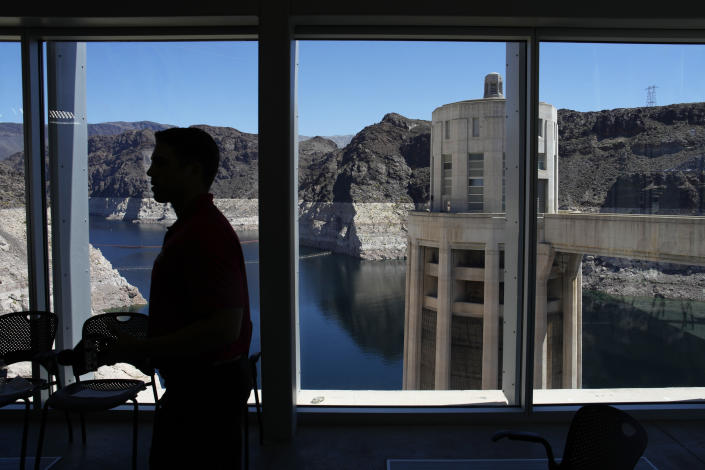
The 1,450-mile (2,334-kilometer) river provides water to 40 million people in seven U.S. states, parts of Mexico and more than two dozen Native American tribes. It produces hydropower and supplies water to farms that grow most of the nation's winter vegetables.
"At least they’re still talking. But money helps you keep talking,” said Terry Fulp, former regional director of the U.S. Bureau of Reclamation’s Lower Colorado Basin region. He noted the agreement is a “short-term, three-year deal” and that because the Upper Basin states of Colorado, New Mexico, Utah, and Wyoming didn’t face immediate cuts, they were not part of the pact.
The three Lower Basin states are entitled to 7.5 million acre-feet of water altogether from the river. An acre-foot of water is roughly enough to serve two to three U.S. households annually.
California gets the most, based on a century-old water rights priority system. Most of that goes to farmers in the Imperial Irrigation District, though some also goes to smaller water districts and cities across Southern California. Arizona and Nevada have already faced cuts in recent years as key reservoir levels dropped based on prior agreements. But California has been spared.
Under the new proposal, California would give up about 1.6 million acre-feet of water through 2026 — a little more than half of the total. That's roughly the same amount the state first offered six months ago. It wasn't clear why the other states agreed to a deal now when California didn't offer further cuts. Leaders in Arizona and Nevada didn't immediately say how they'd divide the other 1.4 million acre feet.
The Imperial Irrigation District would account for more than half of California’s cuts. J.B. Hamby, chairman of the Colorado River Board of California, said the district has already taken measures to improve water efficiency and will need to do more. He said the district is working on a pilot summer idling program where farmers would sign up to turn off their water for 60 days for forage crops. During that time of year, yields are already down and more water is required, he said.
Bill Hasencamp, manager of Colorado River resources for the Metropolitan Water District of California, which supplies water to 19 million people in southern California, said the wet winter means the state simply needs less water. His district is planning on leaving 250,000 acre feet this year in Lake Mead, and won’t withdraw it until after 2026.
The district will also turn over to the federal government a program that pays farmers to fallow land that typically nets them about 130,000 acre feet of water a year, he said. Metropolitan will save roughly $100 million over three years, he said.
Tom Buschatzke, director of the Arizona Department of Water Resources, stressed that the announcement is not a final deal.
“We agreed to a proposal. This is not an agreement,” Buschatzke said during a conference call with reporters. Buschatzke said the proposal still needs analysis and approval from the federal government, which will determine how much funding will be allocated for entities that give up water.
Arizona Gov. Katie Hobbs said the deal provided a way to “build our reservoirs back up in the near-term,” but added that work remained to address long-term effects of climate change and overallocation. Govs. Gavin Newsom of California and Joe Lombardo of Nevada also praised the agreement.
Becky Mitchell, director of the Colorado Water Conservation Board, said on Monday that Upper Basin states didn’t have a chance to analyze Arizona, Nevada and California’s plan in detail. The plan doesn’t change how much water the Upper Basin states of Colorado, New Mexico, Utah or Wyoming will receive.
“The wet winter has given us a bit of space to negotiate, but we must not squander this gift from Mother Nature,” Mitchell said. She said Colorado and other basin states urged federal officials to return to longer-term discussions about how to preserve water levels at Lakes Mead and Powell beyond 2026.
Colorado Democratic U.S. Sen. John Hickenlooper called the plan “a hopeful step towards avoiding catastrophe.” He pointed toward Bureau of Reclamation analysis of the plan “with hopes this provides a path to a seven-state agreement.”
In recent years the federal government has cut some water allocations and offered billions of dollars to pay farmers, cities and others to cut back. But key water officials didn't see those efforts as enough to prevent the system from collapsing.
Last summer, the U.S. Bureau of Reclamation called for the seven basin states to figure out how to cut their collective use of Colorado River water by about 2 to 4 million acre feet in 2023 alone — roughly 15% to 30% of their annual use — but states blew past that deadline and an agreement remained elusive for several more months.
In April, the U.S. Bureau of Reclamation released a plan that considered two ways to force cuts for Arizona, Nevada and California. One contemplated using a decades-old water priority system that would have benefited California and some Native American tribes with senior water rights. The other would have been a percentage cut across the board.
Michael Cohen, a senior researcher at the Pacific Institute focused on the Colorado River, called the amount of cuts the three states have proposed a “huge, huge lift” and a significant step forward.
“It does buy us a little additional time,” he said. But if more dry years are ahead, “this agreement will not solve that problem.”
___
Associated Press writer Amy Taxin in Orange County contributed. Naishadham reported from Washington.
0 Likes
